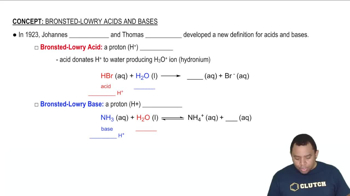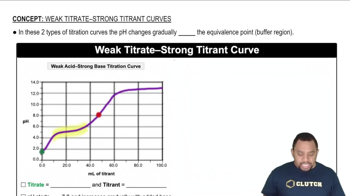Here are the essential concepts you must grasp in order to answer the question correctly.
Acid-Base Theory
Acid-base theory explains the behavior of acids and bases in solution. According to the Brønsted-Lowry theory, acids are proton donors while bases are proton acceptors. This concept is crucial for understanding how different acids interact in a mixture and how they affect the overall pH of the solution.
Recommended video:
Bronsted-Lowry Acid-Base Theory
pH Scale
The pH scale quantifies the acidity or basicity of a solution, ranging from 0 to 14. A pH less than 7 indicates an acidic solution, while a pH greater than 7 indicates a basic solution. The pH is calculated using the negative logarithm of the hydrogen ion concentration, making it essential for determining the acidity of the mixtures in the question.
Recommended video:
Weak vs. Strong Acids
Understanding the difference between weak and strong acids is vital for calculating pH. Strong acids, like HNO3, completely dissociate in solution, while weak acids, such as acetic acid, only partially dissociate. This distinction affects the concentration of hydrogen ions in the solution and, consequently, the pH of the mixtures.
Recommended video:
Weak Acid-Strong Base Titration Curve

 Verified step by step guidance
Verified step by step guidance

